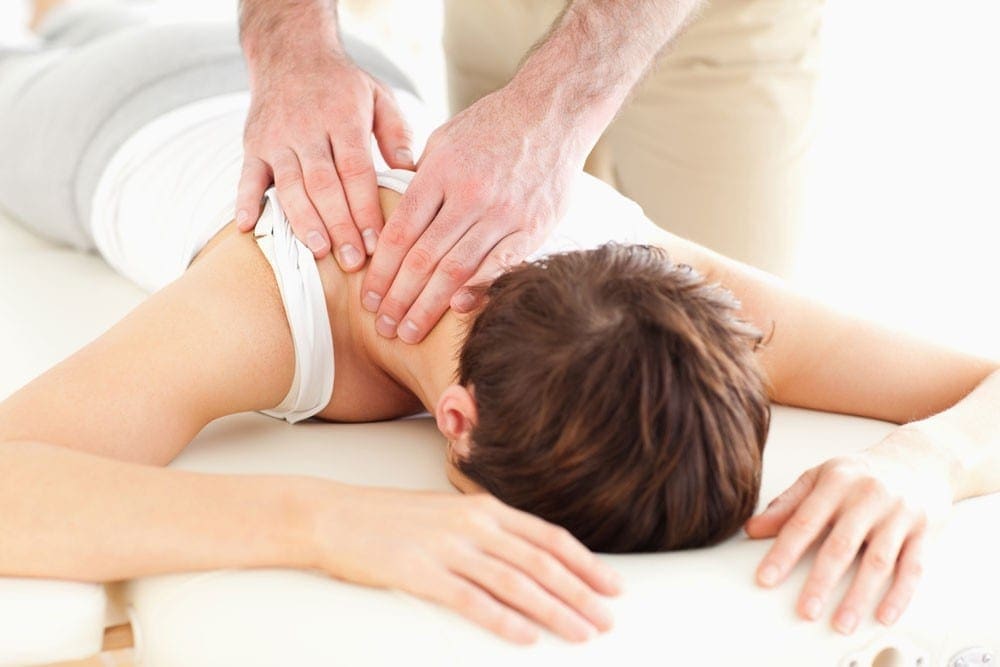
Chiropractic Adjustments and Other Treatment Services | Eastside Chiropractor
A chiropractic adjustment, also commonly referred to as spinal manipulation, manual manipulation, or chiropractic manipulation, is a curative treatment frequently utilized for chronic pain, such as lower back pain.
What is a chiropractic adjustment?
A chiropractor applying manipulation into the vertebrae that fail to function or have abnormal movement patterns is referred to as a chiropractic adjustment. The goal of this chiropractic treatment is to decrease the subluxation, or misalignment, with the focus of increasing range of movement, reducing nerve wracking and improving function.
Chiropractic Adjustment Description
A chiropractic adjustment typically involves:
- A high velocity, short lever arm thrust applied to a vertebra
- An accompanying, perceptible discharge of gas (joint cavitation) that is brought on by the release of oxygen, nitrogen and carbon dioxide, that releases joint pressure (cavitation).
- An alleviating sensation the majority of the time, though minor distress has been reported (that generally lasts for a brief time period) if the surrounding muscles are in spasm or the patient tenses up during the adjustment.
It ought to be known that joint cavitation or cracking doesn’t happen at times, typically as a result of significant muscle splinting or the individual not being adequately relaxed during the chiropractic manipulation. At times such as this, it is sometimes best for your chiropractor to apply ice, have the patient break, or perform electrical stimulation and massage prior to trying the adjustment, to ensure the treatment modality is effective.
Chiropractic Adjustment Techniques
There are several different manipulative methods that can be utilized in chiropractic care, and there’s a specific ability level and “art” involved in high velocity, low amplitude modification or manipulation. It’s perhaps more important for the chiropractor to determine when to not apply the adjustment.
Chiropractic Adjustment Side Effects
The most frequent response to a chiropractic adjustment is soreness or aching in the spinal joints or muscles. If this soreness or aching happens, it does not last longer than 24 hours and is typically within the first few hours post-treatment. The symptoms are frequently reduced by application of an ice pack.
Other Chiropractic Services Beyond Adjustments
The focus on spinal adjustment is the thing that makes doctors of chiropractic unique in their approach to treating patients with spinal complaints. The adjustment, however, may not be the only procedure a chiropractor uses.. For example, chiropractic care has utilized drugless therapeutics (natural remedies) since as early as 1912.
Natural agents like heat, cold, water, massage, light, and exercise are a few of the physiological curative steps which are frequently utilized by chiropractors. When controlled, other and these components can aid a number of common lower back pain problems and exert a beneficial influence on body functions.
Common Alternatives of Chiropractic Care
Some physiological therapeutic measures Which Are often used in chiropractic care include:
Cold and Heat. Chiropractors may alternate between heat and ice therapy to help patients treat back pain. Ice packs can be used to numb the back to get a 10 to 15 minute period and then switched using hot water bottle, heat wrap or a heating pad promote faster recovery and to restore blood flow.
Exercise. Chiropractors can provide patients with directions for an exercise program focusing on strengthening and extending the back, to improve overall health and function alongside other treatments.
Massage. Chiropractors may massage the tissues to improve circulation, reduce inflammation and swelling associated with the pain, and encourage recovery.
Dietary management. Chiropractors will supply patients with tips on how an improved diet may help with their pain, and some could recommend dietary supplements after manipulation.
Ultrasound. With ultrasound, sound waves create heat treatment that is applied to the soft tissues and joints. Basically micro-massaging the delicate tissues and joints, ultrasound therapy doesn’t only help reduce back stiffness, pain, and migraines, but increase blood circulation and accelerate the healing process.
Diathermy. A form of shortwave therapy that passes the softer tissues and provides warmth to denser tissues, hastens the healing process by increasing circulation, decreases muscle spasms, and diathermy relaxes the muscles and connective tissues. In chiropractic therapy using diathermy, the treated area will feel pleasantly warm.
Hydrotherapy. Using water and changing its own temperature and pressure through saunas, whirlpools, baths or wraps, and hydrotherapy concentrates on the human body’s recovery response for back pain. In chiropractic, hydrotherapy may be used to reduce the sensitivity of pain through stimulation that soothes the pain and using hot stimuli to promote recovery and blood circulation.
Electrical muscle stimulation. During this chiropractic therapy, electrodes are placed on the skin which send mild pulses to different regions of the body with the purpose of curtailing muscle spasms, decreasing inflammation and relieving pain back.
Transcutaneous electric nerve stimulators (TENS). The most common form of electrical stimulation, TENS units contain electrodes that are placed using the power to control the intensity of stimulation. It is believed that TENS help prevent the transmission of pain signals and also discharge endorphins, the body’s natural painkillers.
Traction. A chiropractic traction massage could include the patient lying face upward about the back, all of the while stretching and massaging the muscles in the back as a method of rollers maneuver. Chiropractors may use other traction devices that stretch the backbone, decompress the disks and reduce the strain on the nerve roots (a procedure called non-surgical spinal decompression).
Infrared radiation. In chiropractic, a camera may be utilized to image colors indicating the blood circulation in the back. From the body images, reddish shades would indicate IR radiation and blood circulation for instance. Radiation may be used by chiropractors to evaluate conditions which are causing pain back and to distinguish temperature fluctuations from abnormal differences.
Cold laser therapy. After penetrating the skin surface, with cold laser therapy, particles of energy are carried at a laser and absorbed by the photograph receptors of the cell membrane. Tissues and the cells then convert this light energy inducing a biological process that’s thought to decrease swelling, reduce back pain and inflammation, and enhance circulation.
Ergonomics. During the course of care, the chiropractor may recommend some modification like a work station change that is applied at home and/or on the job. The failure or success of obtaining satisfying that is patient outcome may be related to employing an alteration or a hobby-related bothersome activity.
Pelvic stabilization. When deficiency feet and/or subtalar instability are present, the nurse may place a little heel lift in the shoe on the short leg side or urge arch supports to help stabilize the pelvis.
Patient education. A chiropractor can advise a number of lifestyle modifications, including nutritional and diet programs, self-care and working strategies, to the individual experiencing back pain.
These methods may or may not be utilized by the therapist at the duration of a patient’s situation management depending upon their particular needs.
Chiropractic Manipulation and Therapies
Utilizing specific manipulations (chiropractic adjustments) together with one or a combination of the aforementioned, the physician’s aim is to get rid of structural or nervous system discomfort which could possibly be a major contributing element in a patient’s lower back pain, improving the patient’s overall well-being.
The scope of our information is limited to chiropractic and spinal injuries and conditions. To discuss options on the subject matter, please feel free to ask Dr. Jimenez or contact us at 915-850-0900 .�
By Dr. Alex Jimenez
Additional Topics: Wellness
Overall health and wellness are essential towards maintaining the proper mental and physical balance in the body. From eating a balanced nutrition as well as exercising and participating in physical activities, to sleeping a healthy amount of time on a regular basis, following the best health and wellness tips can ultimately help maintain overall well-being. Eating plenty of fruits and vegetables can go a long way towards helping people become healthy.

TRENDING TOPIC: EXTRA EXTRA: About Chiropractic








